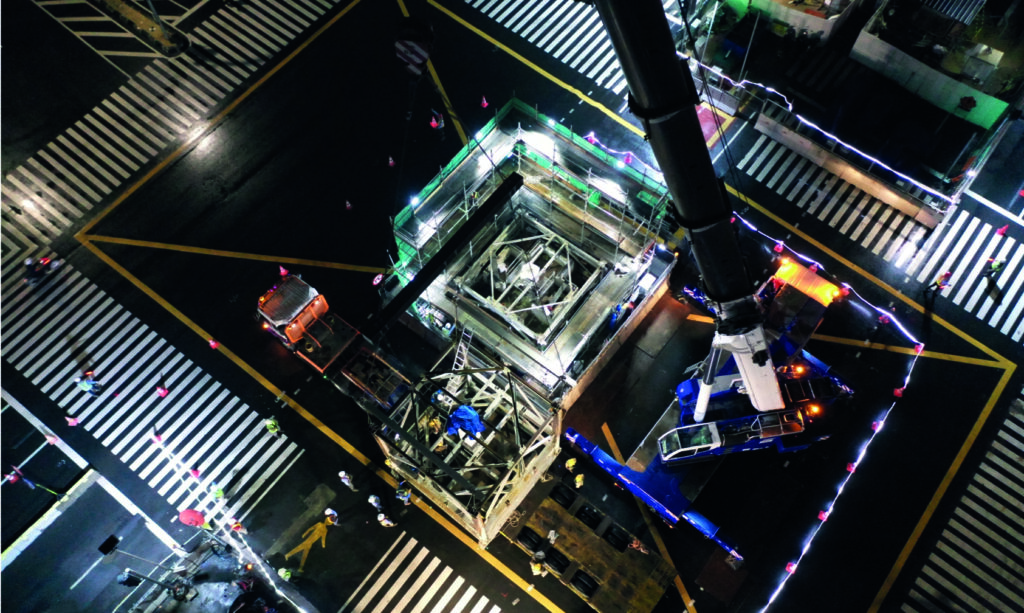
The intriguing historical discoveries uncovered during MRT Jakarta construction Phase 2A.
Remnants of Jakarta’s colonial history, from when it was known as Batavia, have been hiding beneath the surface of the megacity we know today. Dutch infrastructure and historic artefacts from 300 years ago have been rediscovered during the excavation process for the MRT Jakarta expansion project – a buried past, long built upon and paved over, now uncovered.
Launched in 2019, the first phase of Jakarta’s Mass Rapid Transit (MRT) has teased what the future of Jakarta’s inner-city connectivity will look like. It’s initial route from Lebak Bulus to Bundaran HI has been largely considered a success, with residents eager for a greater network. PT MRT Jakarta, a municipally-owned company, has announced that the second phase of the MRT network is being processed over two stages, i.e. Phase 2A and 2B. Phase 2A consists of seven stations with a total track length of approximately 5.8 kilometres, connecting Thamrin, Monas, Harmoni, Sawah Besar, Mangga Besar, Glodok, and Kota. Phase 2B (currently in the feasibility study stage) consists of two underground stations (Mangga Dua and Ancol) and one depot in Ancol Marina with a total track length of approximately 6 kilometres.
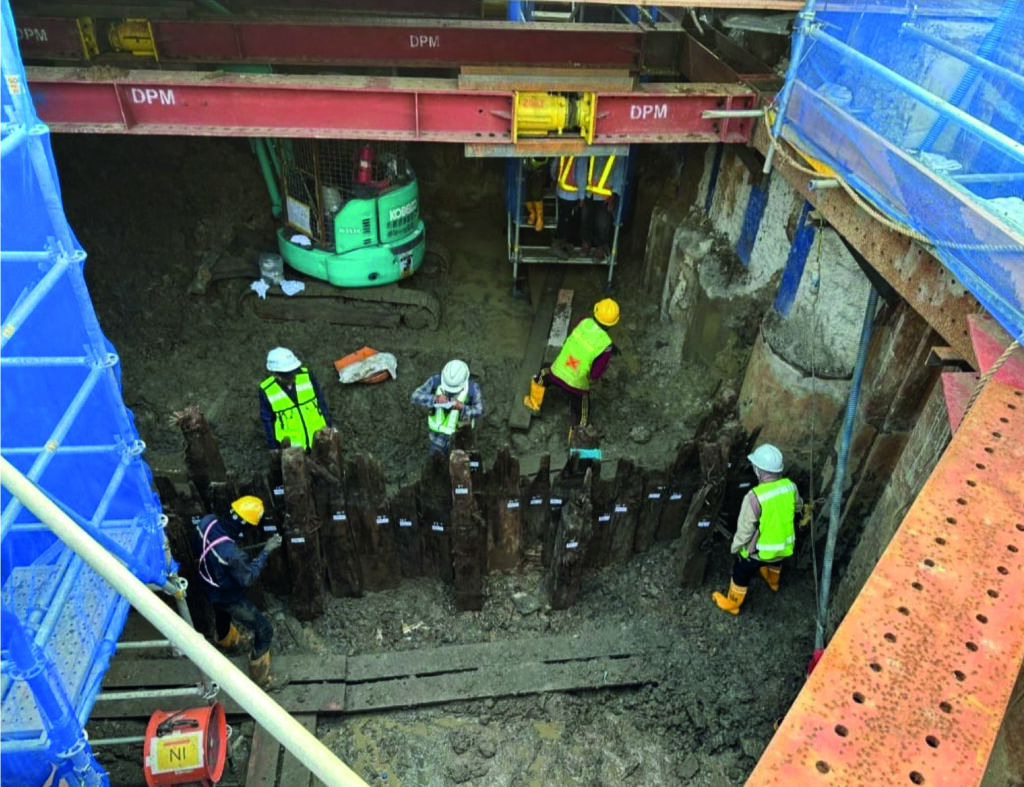
The development of Phase 2A is far more challenging as it is being developed in the historical area of ‘Ring 1’ in the city. Entirely underground, reaching depths between 17 to 36 metres, this new MRT route is found directly beneath Jakarta’s historical sites and thus construction requires special care and handling.
As the route will travel through Kota Tua, old town Jakarta and once the administrative centre of Dutch-governed ‘Batavia’, the project anticipated potential historical obstructions. As such, archaeologists and experts have been included in the extra-cautious excavation and digging stages of construction.
There caution was certainly warranted as digging revealed infrastructure and historical artefacts dating as far back as the 17th century. During the construction of the Harmoni, Sawah Besar and Mangga Besar stations, wooden foundations (cerucuk) were found, which according to archaeologists were part of an embankment system along the Molenvliet canal, originally built in the 18th century. The foundations were found along the Batang Hari canal which is above the planned underground passenger corridor.



Workers handle the Batavia tram rails during the construction of Glodok station. This discovery revealed the transportation system’s history in the colonial era. Courtesy of PT MRT Jakarta.
At the end of 2021, excavations in front of the Bank Mandiri Museum resulted in another fascinating discovery: remnants of an inner-city tram network that was running back in 1934, operated by Bataviasche Tramweg Maatschappij (BTM). The tram system, which measured around 400 metres, and was integral to Batavia’s transportation infrastructure, was a significant and some may say ironic find. The steel tracks, supported by teakwood sleepers which were still intact, had an inscription on their outside, reading ‘B.V.W.S.T. BOCHUM 1931 B. 10’, indicating that they were made in 1931 in the city of Bochum, Germany.
The tram tracks were found between 0.5 – 1 metres beneath the current road surface, and before the MRT project could proceed they had to safely secure 4.1km of historic tram tracks. Listed as assets of the Djakarta Passenger Transportation Public Company, the tram finding are being stored at the DAMRI Pool in Jelambar, West Jakarta.
“Initially, we only found it in a 3×3 meter excavation box in front of the Bank Mandiri Museum. After we found out that the station design was made 400 meters from Glodok to Asemka, all the tram rail structures were very clear at a depth of 1 metre. We dug again to 2.5 to 3 meters, and we found terracotta pipes. These were the colonial city’s clean water pipelines.” Muhammad Faiz, one of the archaeology expert team, told NOW! Jakarta.
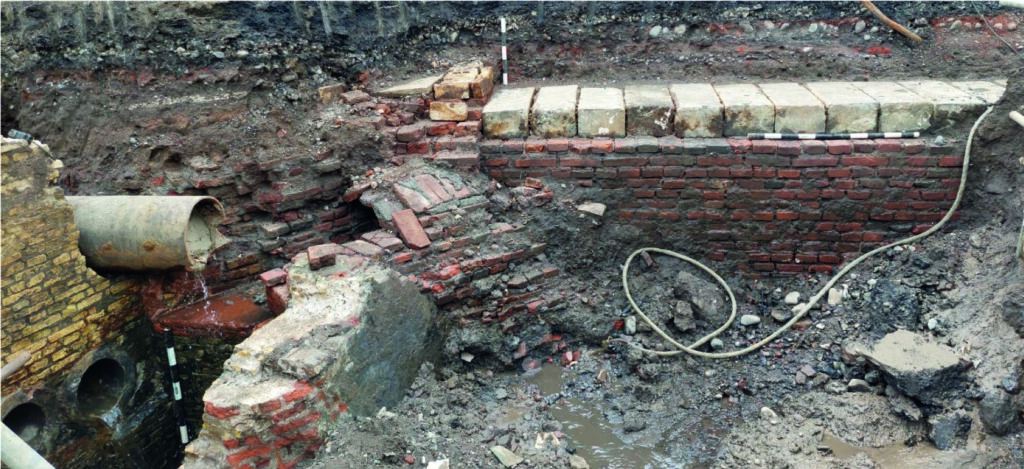

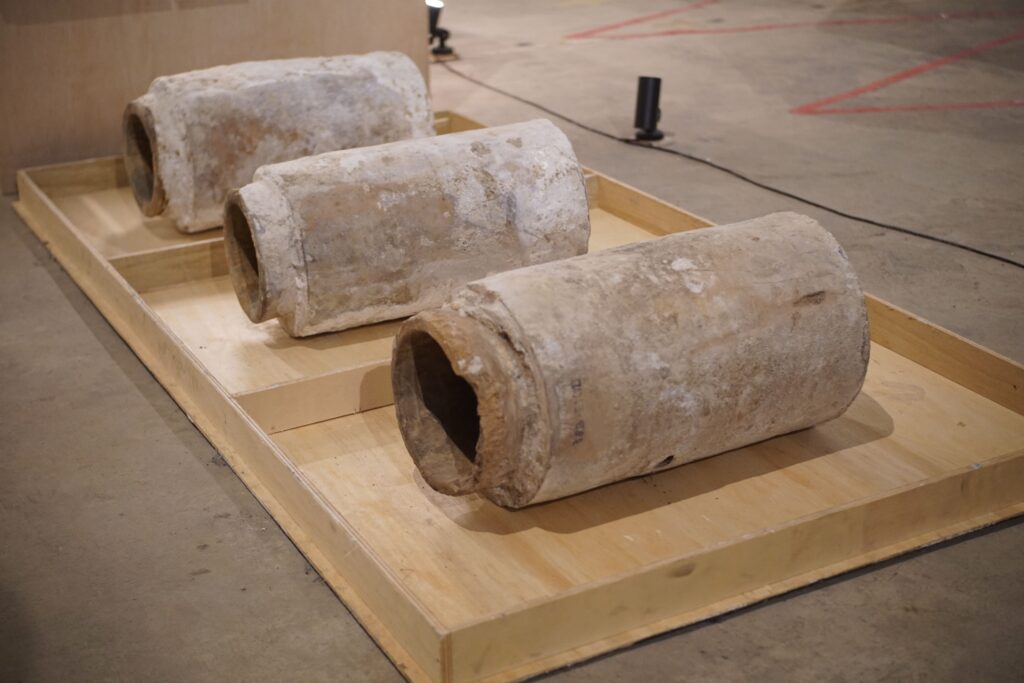
According to archaeologists, the structure of the clean water channel is a clean water supply system (waterleiding) built and used during the colonial period. This channel was found stretching along Jalan Pintu Besar Selatan. Its construction is very similar to the brick water channel discovered by the Dutch East Indies Archaeological Service in 1940 inside Batavia Castle. Further excavations in 2023 revealed that this underground water channel continues from Jalan Pintu Besar Selatan to Jalan Pancoran (Glodok).
From this excavation, it is known that the base point of this historic potable water system was in the Glodok area. There was a tank used to hold water from the waterplaats before entering three pipe sections made of terracotta. The water came from the Molenvliet canal, before being distributed using underground pipes, the water was first purified at the waterplaats facility located in Glodok which is now the site of the Orion building. The placement of the channel underground was intended to avoid garbage and polluting materials such as dirty canals in the city. The work of making the channel is estimated to have taken place during the tenure of Governor General Gustaaf Willem (Baron) van Imhoof (1743 to 1750).
“This is the most distinguished excavation in the history of Indonesia. This clean water channel is the oldest in Jakarta and the third oldest in Indonesia after the ones found in Trowulan and Banten. But the clean water channel system found in Jakarta is more complex and modern. There is a water reservoir after the water is collected and cleaned, it is then distributed using gravity. There is a control tank and a filtering step too.” Argi Arafah, part of the team of archaeological experts, explains in detail.

Courtesy of PT MRT Jakarta.
When the station is operational, findings such as this ancient Batavia clean water channel, still intact in several parts, will be exhibited in the underground corridor between the Kota MRT Station and the KCI Jakarta Kota (KAI) Station. While several other findings will be further curated and exhibited, especially small-sized findings, in Kota Station.
From this discovery, the archaeology team can conclude that at that time Jakarta was already experiencing a clean water crisis. The clean water constraints in Jakarta also gave rise to the profession of water sellers since the 18th century. This profession still exists today.
Incidentally, the remains of the walls of the Benteng Kota Batavia (Batavia city fortress) were also discovered, which were dismantled on the orders of Governor-General Herman Willem Daendels (1808), made of stone blocks, where the excavation box was located close to the remains of the southern wall of the fortress. This discovery is an asset of the Jakarta Cultural Service, now placed in a storage facility on Jalan Tongkol, Ancol, North Jakarta.
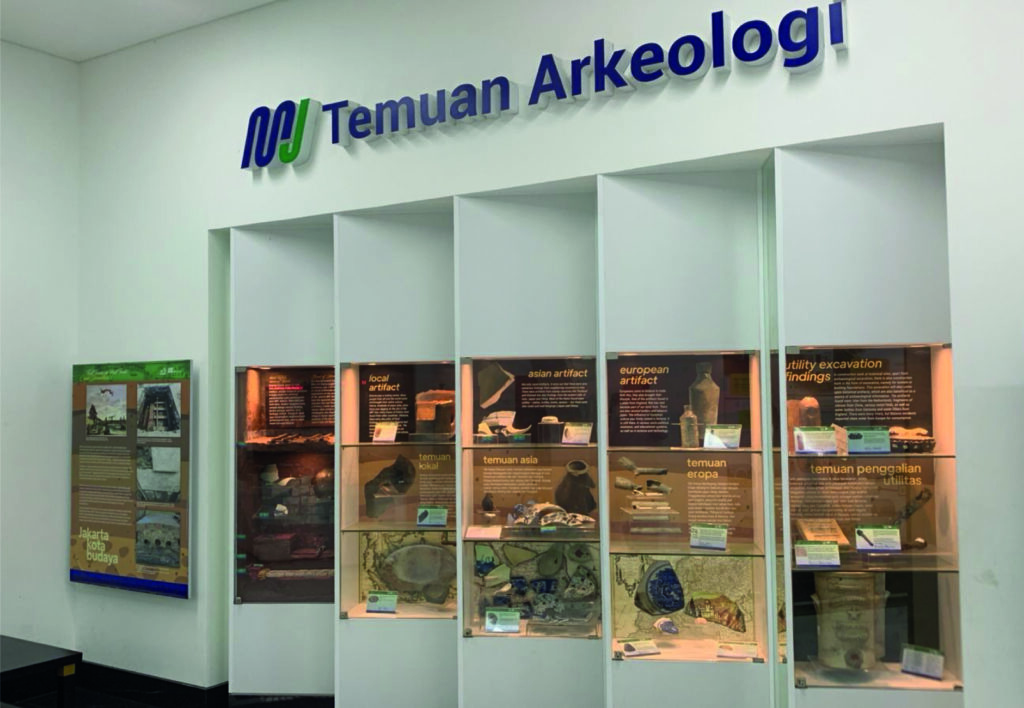


MRT Jakarta’s Gallery at the Jakarta Kota station where visitors can see the artefacts from the MRT Jakarta Phase 2A construction. It opens everyday from 9 am to 5 pm. Courtesy of PT MRT Jakarta.
Other loose discoveries in the Jakarta MRT phase 2A project include typical Chinese bottles from the 17th century, ceramic plates from the 18th century, and typical Dutch tobacco pipes from the 18th century. Some of these findings have been displayed at the MRT Gallery of the Jakarta MRT located at the Jakarta Kota KAI Station so that visitors can see the historical relics of the old city of Jakarta.
“Although the main goal of the MRT Jakarta project is to transform urban mobility, these archaeological findings provide insight into the lives of people during the Dutch Colonial period and add a dimension of historical richness as part of this project. MRT Jakarta actively communicates about these archaeological findings through our social media channels. And, on several occasions, we also participate in exhibitions,” shares Weni Maulina, MRT Jakarta’s Construction Director.
These findings remind us that in every modern city there is a history to be revealed. And that progress and preservation can go hand-in-hand. These discoveries not only define Jakarta’s past, they will now be a part of Jakarta’s future too.






